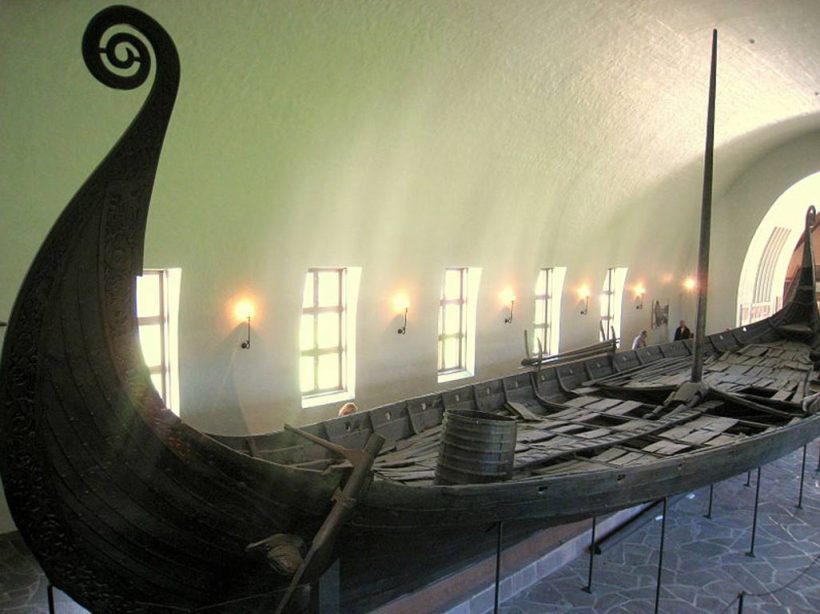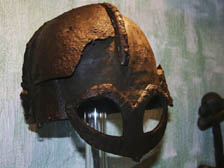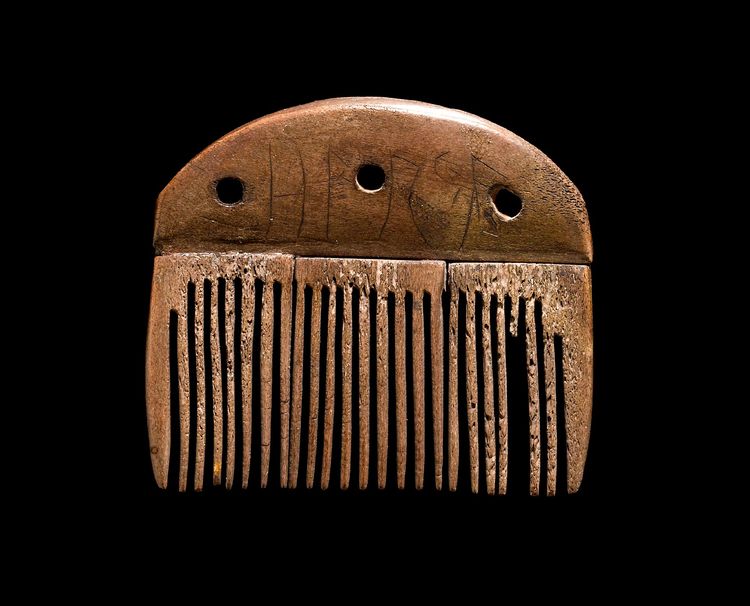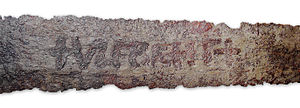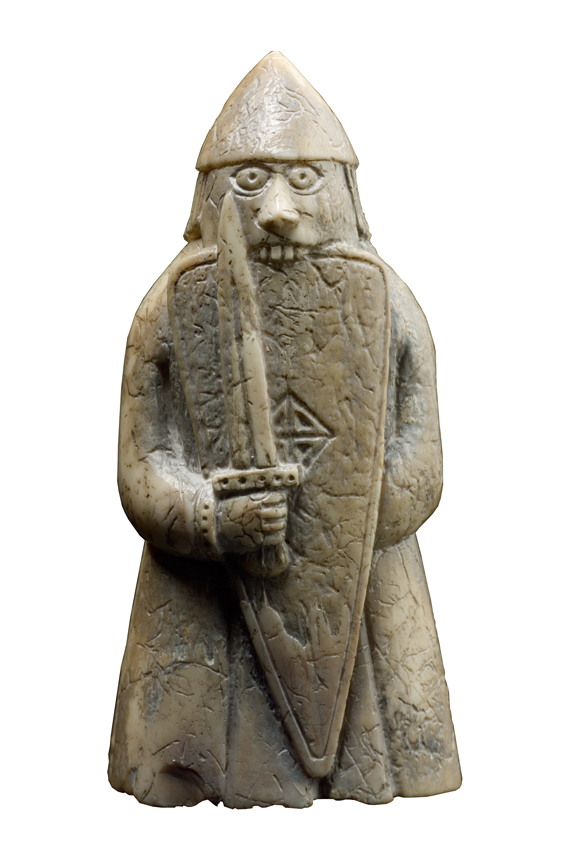Everyone knows the tales of famous Vikings such as Ragnar Lothbrok, Erik the Red and Ivar the Boneless… But what about others, who also achieved amazing feats during this fascinating period of history?
Before we begin, I’d just like to point out that some of these names may well be fictional (even mythological) characters, however they are almost certainly based on real people. I guess we will never know the truth, but these names – and associated deeds – live on!
So, without further ado, here are a few lesser-known Viking heroes:
1. Arngrim
A berserker who features in Hervarar Saga, Gesta Danorum, Lay of Hyndla, and a number of Faroese ballads.
According to Norse legend, Arngrim was once in possession of the magical sword, Tyrfing. He apparently went to the King of Gardariki (the Old Norse term for the states within Kievan-Rus), who owned the sword at the time. A battle ensued, in which Tyrfing – wielded by King Svafrlami – cut straight through Arngrim’s shield. Arngrim promptly cut of Svafrlami’s hand with his own weapon, before grabbing Tyrfing and using it to slay the king. He then captured Svafrlami’s daughter, Eyfura, and forced her to marry him.
Another version of this story recounts that Arngrim actually became Svafrlami’s war-chief, winning many battles and conquering many lands on his behalf. As a reward, the old king gave Arngrim a high position in the realm, as well as Eyfura and Tyrfing.
In all versions of the Saga, Arngrim returns to the island of Bolm in Hålogaland (the northernmost of the Norwegian provinces during these times). There, they have twelve sons, all of whom grow up to become berserkers.
There are many variations of this story, each with slightly different details, but experts generally agree that a Swedish Viking called Arngrim did indeed exist!
2. Haki
A Scandinavian sea-king, famous during his lifetime (presumably sometime around the 5th century). He is mentioned in multiple sources, including Gesta Danorum, Völsunga Saga and Ynglinga Saga.
According to Ynglinga Saga, Haki had amassed a great force of warriors. When he considered that he had amassed enough wealth and followers to make himself king of Sweden, he proceeded with his army against the Swedish royal seat at Uppsala.
Haki was feared and revered as a brutal warrior, who supposedly managed to crown himself king after a gruelling battle in which the previous king and two of his sons were slaughtered.
Haki was too confident, and comfortably sat on his throne for three years whilst his armies continued raiding elsewhere. Two of the previous king’s surviving sons, Eric and Jorund, realised that Haki was now a vulnerable target… They assembled a large force, and were joined by many other Swedes who wanted to reinstall the Yngling dynasty on the throne.
Haki met this huge, vengeful army with his own considerably smaller force at Fyrivellir (a marshy plain south of Gamla Uppsala). Haki himself reportedly killed many of the opposing men, including one of the brothers (Eric). However, he was mortally wounded during the fray.
In his final hours, Haki asked for a longship, which was loaded with his dead warriors and their weapons. Upon the ship, they also built a makeshift funeral pyre. His life now rapidly ebbing away, Haki was laid upon the pyre, as the ship was pushed further out into the waters of the Fyrisån River (which flows through the marsh, and from which the marsh gets its name).
Other leaders respected Haki for his bravery on the battlefield, and courageous end.
3. Hrothgar
According to medieval sources, Hrothgar was a Dane who lived around the early 6th century.
Appearing in the Anglo-Saxon epics Beowulf and Widsith, as well as in Norse Sagas and poems, he was the son of Halfdan Scylding (a legendary Danish king).
Hrólfr Kraki’s Saga recounts that Halfdan had a brother named Frodi, who attacked and killed him, making himself king of Denmark. Frodi wanted to eliminate his nephews so that no one else would have a claim to his newly-acquired throne, but Hrothgar and his brother Halga survived on a remote island, protected by a man named Vivil.
Eventually, Hrothgar and Halga avenge their father by killing their uncle Frodi. Halga assumed the title of king, whilst Hrothgar (described as ‘meek and blithe’) instead joins the king of Northumbria – Nordri – marrying Princess Ögn. As recompense for Hrothgar’s share of the Danish kingdom, Halga gives him a golden ring.
Their nephew Hrókr (son of their sister Signy) became jealous that he didn’t inherit anything from his grandfather, Halfdan, so went first to his uncle Halga. Halga refused to give him a third of Denmark. Next, he went to Hrothgar, and asked to see the golden ring. He appeared to look curiously at it, before throwing it suddenly into a body of water. This angered Hrothgar so much that he cut off his nephew’s feet, and sent him back to his ships. Hrókr, now disabled and bitter, returned with a large army and succeeded in killing Hrothgar. In an almost comical act of revenge, Halga then cut off Hrókr’s arms!
Hrothgar’s story in Beowulf differs somewhat, with his wife being named there as Wealhpeow instead of Ögn. It is believed that the Northumbrian king Nordri was fictional (although most probably based upon a real ruler!).
4. Redbad
One legendary Viking we do know definitely existed, is Redbad of Frisia.
He is listed in several sources as the king or duke of Frisia (part of what is now known as the Netherlands) from around 680 until his death in 719.
Considered the last independent ruler of Frisia before Frankish domination, Redbad was renowned as a fearsome and strategic warrior who stubbornly resisted the forced Christianization of his people. One monk did try to convert Redbad, but failed when he refused to be baptized as he wouldn’t join his ancestors if he went to Heaven.
Redbad was quoted as saying “I’d rather spend eternity in Hell with my pagan ancestors, than in Heaven with my enemies”.
A descendant of Redbad renamed himself in honour of his ancestor, becoming Saint Radboud (a bishop of Utrecht).
Redbad’s legacy still lives on today, in the form of an opera by Wagner (Lohengrin), and in albums by bands such as Ophidian Forest (‘Redbad’) and Baldrs Draumar’s ‘Aldgillessoan’.
A university and medical facility in the Netherlands were also named after Redbad respectively.
There is a Dutch movie called ‘Redbad’ too, which is a chronicle of his life!
I will add some more names to this list very soon, so watch this space!






